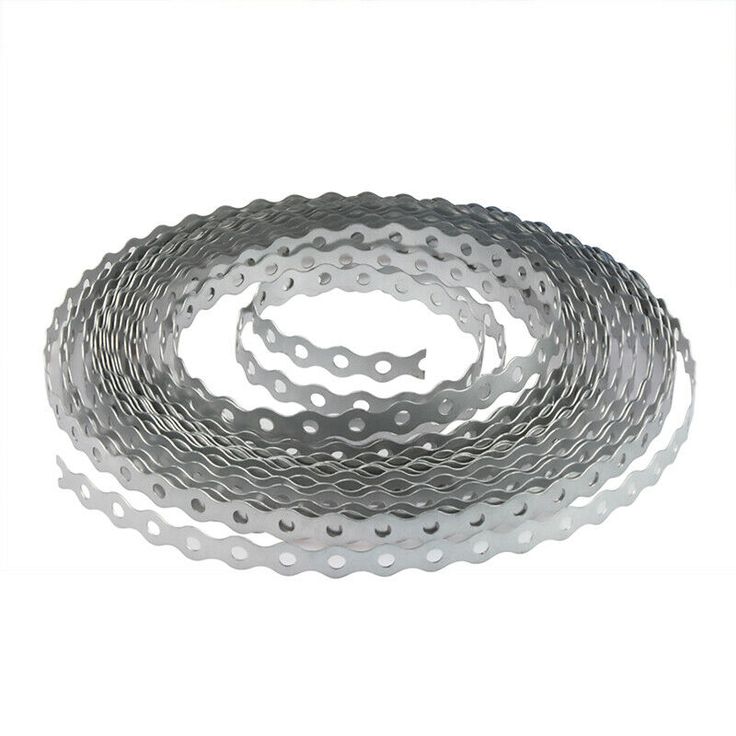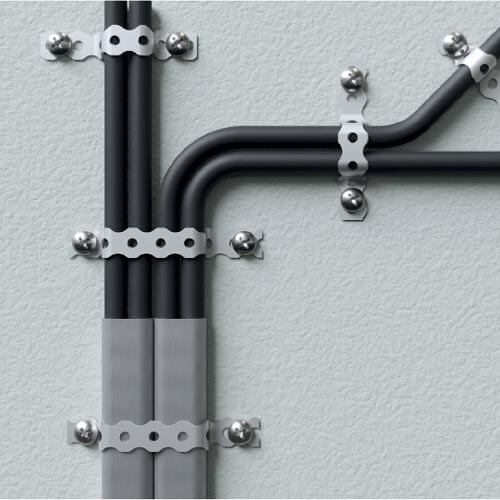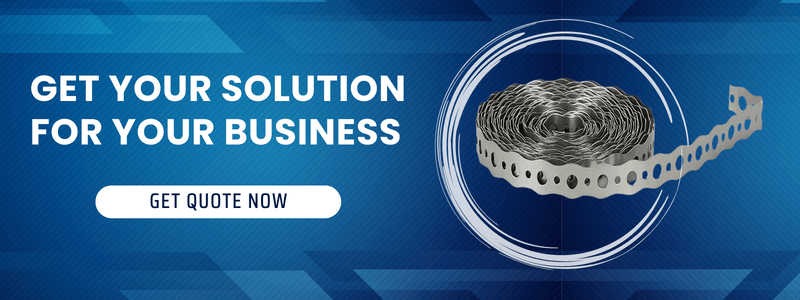If you’ve ever done any plumbing work, HVAC installation, or general construction, chances are you’ve used pipe hanger straps. Specifically, the galvanized pipe hanger strap is a common choice among professionals These simple yet versatile pieces of hardware allow you to securely mount pipes and ductwork to ceilings, walls, and floor joists. In this guide, we’ll explore everything you need to know about 24 gauge galvanized pipe hanger straps, from what they are to how to use pipe hanger strap effectively.
What Are 24 Gauge Galvanized Pipe Hanger Straps?
Pipe hanger straps, sometimes called pipe saddles or pipe strap clamps, are heavy duty metal brackets used to support and hang pipes. As the name suggests, 24 gauge galvanized straps are made from 24 gauge (0.0201 to 0.0252 inches thick) galvanized steel. Galvanization applies a protective zinc coating to prevent corrosion and rust.
These straps come in different sizes to accommodate pipes from 1/2″ all the way up to 8″ in diameter. They feature pre-punched holes that allow you to screw or nail the straps into place on studs, joists, concrete, or masonry. Some types, like the heavy duty pipe hanger strap,also have a movable piece that tightens around the pipe via a bolt.

Benefits of Using 24 Gauge Galvanized Pipe Straps
There are a few key reasons why 24 gauge galvanized straps are the go-to choice for pipe hanging applications:
Durability – The 24 gauge steel construction, combined with the metal hanger strap design, gives these straps excellent strength for securely supporting pipes long-term. And the galvanized coating protects against corrosion.
Versatility – Available in different sizes and designs to hang a wide range of pipe types and sizes. The pre-punched holes offer flexible mounting options.
Cost-effective – Galvanized steel is an affordable material. These straps provide reliable performance at a lower cost than stainless steel or copper.
Code compliance – Meets plumbing and mechanical codes requirements for residential and commercial pipe support.
Easy installation – With a simple design, both DIY enthusiasts and professionals can quickly learn how to use pipe hanger strap for installations.
Types of 24 Gauge Galvanized Pipe Hanger Straps
There are two main categories of 24 gauge pipe hanger straps – suspended straps for hanging pipes from overhead, and anchored straps for securing pipes to vertical or horizontal surfaces. Within these categories, there are a few specific types and designs:
Suspended Straps
Single bolt straps – These have one movable side that tightens around the pipe with a bolt. They hang from the ceiling or floor joists.
Two-bolt straps – Feature two movable sides that tighten around the pipe via bolts. Very secure.
All-thread rod hangers – Utilize all-thread rods cut to length with nuts to suspend pipes from ceilings.
Clevis hangers – A U-bolt that hangs from threaded rod or bolts to the ceiling.
Riser clamps – Support vertical pipe runs.
Anchored Straps
Single-hole flat straps – Simple flat strap with one hole on each end for anchoring to a wall or other surface.
Two-hole flat straps – Same as single-hole but with two holes on each end for added fastening options.
Chair straps – L-shaped to mount pipes to vertical surfaces and provide a shelf for support.
U-bolts – Wrap around pipe and anchor to floor or wall.
How to Determine the Correct Size Pipe Hanger Straps
Pipe hanger straps must properly fit the outer diameter of the pipe in order to support the weight and allow for expansion and contraction. Using ill-fitting straps can lead to pipe sagging, leaks, and displacement over time.
Here are some tips for choosing the right size straps:
- Measure the outside diameter of your pipe with a measuring tape.
- Add 1/4″ – 1/2″ to the diameter.
- Select a strap size that fits this measurement. Going slightly larger is better than smaller.
- Straps are commonly sized for 1/2″, 3/4″, 1″, 1-1/4″, 1-1/2″, 2″, 3″, 4″, 5″, and 6″ pipe diameters.
- Consult the strap packaging or a pipe hanger sizing chart if unsure.
- Consider extra wide straps for larger plastic pipes that are prone to sagging.
- Measure at multiple points along the pipe as diameter may vary.
Allowing some extra room in the strap ensures it can properly handle pipe expansion and contraction as temperatures fluctuate.
How to Determine Pipe Hanger Spacing
Equally important as using the right size straps is spacing the straps correctly when mounting horizontal pipes. This helps distribute the load properly and prevent low spots or drooping in the pipes.
Follow these general spacing guidelines:
- Steel – Every 8 to 10 feet
- Copper – Every 6 to 8 feet
- Plastic – Every 4 to 5 feet
- CPVC – Every 3 feet
Reduce these distances by about one third for vertical piping.
Place hangers:
- Within 12″ on both sides of each elbow or tee joint.
- On both sides of valves.
- Where pipe changes direction.
- Within 24″ of the end of each pipe run.
Don’t exceed the maximum hanger spacing dictated by applicable plumbing and mechanical codes.
How to Install 24 Gauge Galvanized Pipe Hanger Straps?

First and foremost, make sure all pipes are in place and fastened together properly before applying hangers. Always check and follow local building codes related to pipe straps and hangers.
Here is an overview of how to install the straps correctly:
Suspended Straps
1. Determine the required hanger locations per the spacing guidelines and code. Mark with a pencil.
2. Based on the surface, install appropriately-sized screws, bolts, or other anchors at the marked locations to hang straps from. Pre-drill holes if necessary. For concrete ceilings, use concrete anchors.
3. Lift the pipe into position and place hanging straps over anchors. Use riser clamps on vertical runs. Leave straps slightly loose.
4. Tighten bolts on adjustable straps so they firmly grip pipe. Avoid overtightening.
5. Check that pipe is level and adjust strap height as needed. Allow a slight downward pitch for drain pipes.
6. Secure straps in place by tightening nuts on anchors.
Anchored Straps
1. Determine hanger locations per spacing rules and code. Mark on mounting surface.
2. Place strap against surface over marks and align holes with marks.
3. Drill holes for anchors if necessary. Protect pipe from metal shavings.
4. Select appropriate anchors for the mounting surface – lag screws for wood, masonry anchors for concrete, etc.
5. Install anchors but leave slightly protruding to slide strap over them.
6. Set pipe into anchored strap. Position pipe to rest on strap’s “shelf” if using chair-style strap.
7. Tighten strap bolts until pipe is securely held in place. Avoid overtightening.
8. Tighten anchors/screws securing straps to surface.
9. Check pipe alignment. Make any leveling adjustments.
Be sure to carefully follow the manufacturer’s instructions included with your specific pipe straps.
Pipe Strap Installation Tips
Follow these tips for proper installation and pipe support:
- Use strap material compatible with your pipe material to prevent corrosion.
- Align straps perpendicular to the pipe length.
- Space straps evenly to distribute weight.
- Use strap cushions or inserts to prevent abrasion damage to pipes.
- Allow pipe expansion/contraction and insulate pipe properly.
- Slope horizontal drain pipes 1/4″ per foot using graded hangers.
- Keep Straps loose enough for pipe to move but tight enough to eliminate sagging.
- Avoid damaging pipe coating when tightening U-bolts. Use cushion tape.
- Use two-hole straps at pipe ends and elbows for more support.
- Hang heavy cast iron or plastic pipes every 3-4 feet.
- Still follow codes for hanger spacing when using flexible connectors.
Safety Tips When Installing Pipe Straps
- Use proper ladder safety when overhead drilling or fastening straps.
- Wear safety glasses when drilling or cutting metal straps or anchors.
- Use hearing protection when using power tools.
- Be aware of electrical, gas lines, and other hazards behind walls. Shut off water when appropriate.
- Allow pipes/straps to cool before touching if hot.
- Follow safe lifting practices for heavy pipes or cast iron. Use assistance.
- Tighten strap bolts securely by hand then finish tightening lightly with a wrench.
- Don’t overtighten U-bolts. This can damage pipe coatings.
Choosing the Best Quality Pipe Hanger Straps
With so many strap brands and models available, it can be tricky choosing good quality straps that will reliably hang pipes long-term. Here are some tips for selecting top-notch straps:
- Stick with reputable manufacturers – Established brands like Anvil International, B-Line, Erico, and Cooper Industries make high quality hangers.
- Check the gauge rating – 24 gauge steel offers the best durability for residential and commercial use. Avoid thinner 28+ gauge options.
- Inspect welding/construction – Straps should have strong, clean welds without defects or cracks.
- Get galvanized – Zinc coating is essential for corrosion resistance, especially for indoor wet pipe applications.
- Consider stainless steel or plastic – For extreme humidity or corrosive environments. Avoid painting galvanized straps.
- Verify certifications – Look for ASME 31.1 or MSS SP-58 compliance for code approval.
- Check design features – Well-designed straps are easier to properly install and adjust around various pipe types.
- Confirm dimensions – Make sure strap hole spacing matches common building materials to simplify mounting.
- Buy local – Readily available styles that comply with regional codes makes future replacements easier.
Prioritize straps that are durable, offer good protection, and properly fit the pipes you are installing. It’s worth investing a few extra dollars for quality that will last.
Alternatives to Galvanized Pipe Hanger Straps
While galvanized steel straps are the go-to choice for most applications, here are a few alternatives worth mentioning:
- Plastic pipe straps – Made from durable nylon or polypropylene with corrosion resistance. Good for extremely wet areas. Less strength.
- PVC coated galvanized steel – The PVC dip provides extra corrosion protection compared to plain galvanized straps. A good compromise.
- Stainless steel straps – The best corrosion resistance but more expensive. Most beneficial in salt air or chemical plant settings.
- Copper straps – Offer excellent corrosion resistance for indoor plumbing systems. Softer material requires more supports.
- Malleable iron – Heavy duty option comparable to galvanized steel that conforms slightly during installation. Rustic look.
- Rubber hangers – Provide vibration dampening and soundproofing but less strength and difficult to attach. Require closer spacing.
Consider stepped up corrosion protection for high humidity and chemical environments. Or utilize plastic or rubber hangers if noise is a concern. But galvanized steel offers the best all-around balance of strength, protection, and cost.
Home Depot Pipe Strap Options
Home Depot is a one-stop-shop for those looking to purchase pipe straps. They offer a variety of galvanized pipe hanger straps suitable for various applications:
- Everbilt 1/2 in. and 3/4 in. Pipe Hanger Strap – Ideal for smaller copper or PEX pipes and offers value for money.
- B-Line B2000 Series Pipe Straps – A sturdy option from a top brand available in most sizes.
- Nelson 1 in. Pipe Hanger Strap – Comes with a cushion insert to prevent abrasion damage to pipes.
- BlueLine Pipe Straps by Anvil International – Offers several sizes and styles, including riser clamps.
- MIRO 11118 Pipe Hangers – A multi-pack of 1-hole straps that provides cost savings.
- Traditional 1/2-In Galvanized Pipe Strap – A simple, single-hole strap suitable for smaller diameter pipes.
They also offer all the required mounting hardware, threaded rod hangers, and pipe insulation accessories you need to complete the job. Take advantage of their pipe strap selection and prices on your next plumbing or HVAC project.
Conclusion
From choosing the optimal size and spacing to selecting top-quality straps and safely mounting them, installing pipe hangers strap straps requires a bit of know-how. But having the right information about 24 gauge galvanized straps takes the guesswork out of properly supporting pipes to code. Follow the guidelines provided to utilize these versatile, heavy duty straps like the pros. And be sure to leverage the variety of durable and budget-friendly strap options at your local Home Depot. Your pipes will stay organized, protected, and right where they need to be.
Secure Your Pipes with Galvanized Metal Straps: A Comprehensive Guide
Ensuring Pipe Stability and Longevity In the world of construction and plumbing, maintaining the structural integrity of piping systems is paramount. Galvanized metal pipe straps emerge as the unsung heroes, providing unwavering support and security to these vital...
Mastering 24 Gauge Galvanized Pipe Hanger Straps: A Useful Guide
In the realm of plumbing and construction, where every detail matters, securing pipes effectively is paramount. Enter the 24 gauge galvanized pipe hanger strap – a reliable and versatile solution trusted by both professionals and DIY enthusiasts alike. Understanding...
Perforated Metal Hanger Straps: Installation, Benefits, and Maintenance
Are you tired of dealing with sagging ductwork or unsupported pipes in your home or commercial building? Proper support is crucial for maintaining the integrity and efficiency of your HVAC and plumbing systems. That's where perforated metal hanger straps come into...

Justin Wong
Hi, I’m Justin, the technical engineer of Jiangmen Masters. We’ve been running a factory in China that makes metal hanger strap for 16 years now, and the purpose of this article is to share the knowledge related to metal hanger strap from a Chinese supplier’s perspective.




